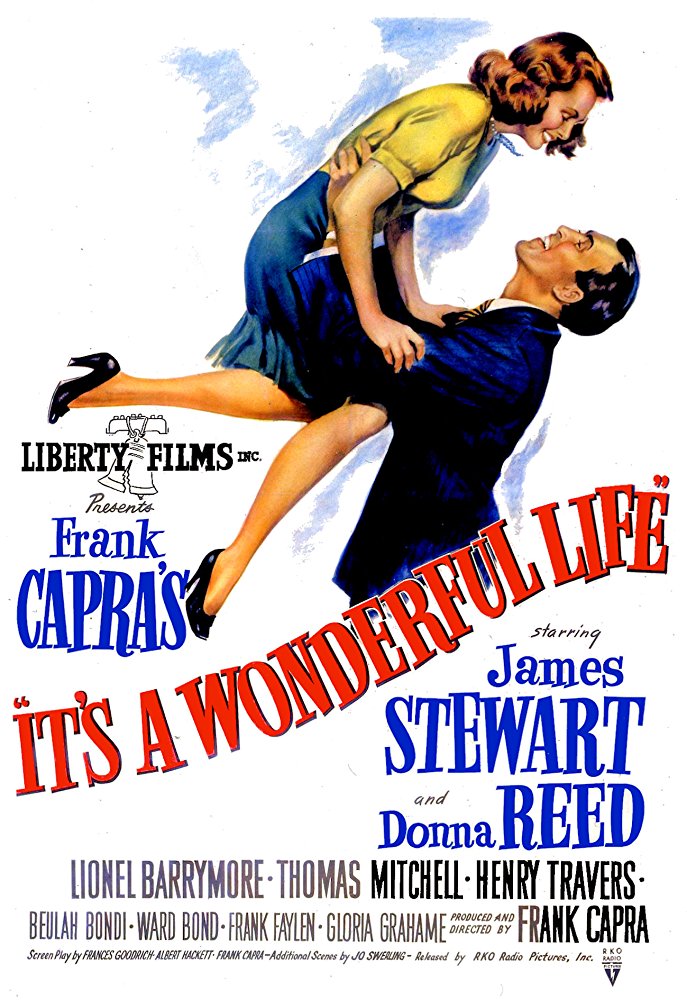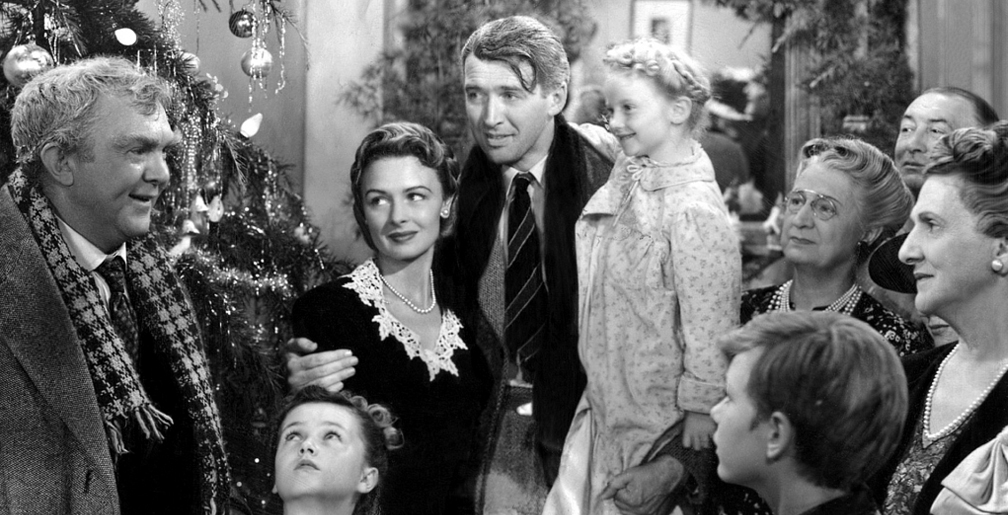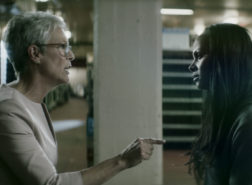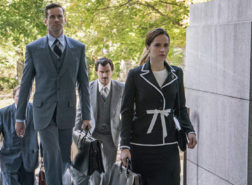 (5 / 5)
(5 / 5)
An angel is sent from Heaven to help a desperately frustrated businessman by showing him what life would have been like if he had never existed.
Regularly appearing on the list of Hollywood releases that opened as box office flops yet went on to become classics, it’s hard to understand how “It’s A Wonderful Life” could have managed such a distinction. Then again, who would have thought the same about fine films such as “The Shawshank Redemption,” “Children of Men,” “The Wizard of Oz,” or “Blade Runner,” which all shared a similar fate?
In the case of the Frank Capra classic, the narrative elements were considered somewhat dark for audiences in 1946. Viewers remained largely unimpressed – despite five Academy Award nominations – for decades afterward. Not until the copyright expired in 1974, enabling the story to air on network television did its reputation begin to burnish. VCRs and DVD players further ensured the movie’s perennial popularity. Now fully restored, “It’s A Wonderful Life” returns better than ever.
Everyone probably treasures his or her own favorite scenes or particular moments. Presuming that most readers will have seen the film (and even if not) I will simply share some of the aspects I find most memorable.
First, “A Wonderful Life” feels like a sort of time capsule of the depression era and post-war periods that more contemporary productions never quite seem to capture. George Bailey, played by Jimmy Stewart, strolls through the walkable and personable downtown of Bedford Falls, surviving a perilous bank run in the days before President Roosevelt championed deposit insurance. Because of his work at the building and loan, home ownership emerges as the dream for middle and working-class Americans.
A persistent Capra theme of the little guy against powerful institutions remains front and center. The stodgy old Mr. Potter cares only about profits, regardless of the toll taken on the larger community. Potter’s wealth affords him so much influence that he keeps Congressmen in his pocket and blithely refuses their calls.

It seems that little has changed in the intervening years. The plight of smaller businesses and regional banks against the too-big-to-fail financial institutions and Amazonian retailers now figure more prominently than ever. A growing body of research reveals that corporate obsession with tax breaks, quarterly earnings, and bloated share prices comes at the expense of workers and their families, whose growing antagonism threaten the societal fabric. “It’s A Wonderful Life” serves as a prescient reminder that there is more to life than money or profit.
Growing up watching television, I missed Hollywood’s Golden Age – generally chronicled from 1929 to the 1960s. So the first time I saw Donna Reed was on her eponymous television show in the early ’60s. Much the way I first encountered Ingrid Bergman and Lauren Bacall in the 1974 version of “Murder on the Orient Express” or Barbara Stanwyck in “The Big Valley,” I often wondered how these aging celebrities had initially established themselves as stars. It was only later as a result of a radio, television and film course at the University of Texas at Austin, that I became spellbound upon witnessing their respective performances in “Casablanca,” “To Have and Have Not,” and “Double Indemnity.” Similarly, the grace, charm, and beauty of Donna Reed in “It’s A Wonderful Life” is nothing less than breathtaking.
Another aspect worth noting is the presumption of regret, often associated with such works as Robert Frost’s “The Road Not Taken.” Some films like “Edge of Tomorrow,” “Groundhog Day,” and last year’s “Happy Death Day,” deal with alternative futures where the protagonist enjoys endless opportunities to finally get things right. For George Bailey, much like Ebenezer Scrooge in “A Christmas Carol,” the spirits grant only one alternative vision. Happily, to borrow a phrase from “Indiana Jones and the Last Crusade,” both men choose wisely.
Most notably, and despite ubiquitous repeated viewings, so many scenes never fail to deliver. I will list but a few. A teenage George prevents Mr. Gower from inadvertently poisoning a drugstore customer, thus rescuing the pharmacist from a lifetime of guilt and misery. The way the participants of the entire high school dance, formal dress and all, jump into an enormous swimming pool, demonstrating the community’s admiration for George Bailey and Mary Hatch even in their youth. The telephone conversation with Sam Wainwright where George finally realizes how much he loves Mary. George’s horrifying revelations about the Bedford Falls in which he never existed. The final scene, where the entire town rallies to George’s rescue (after Uncle Billy misplaces an $8,000 bank deposit) and Clarence, at last, gets his wings. Harry Bailey, recently awarded the Congressional Medal of Honor by President Truman, proudly proclaims his older brother the richest man in town.
My only complaint is the way the media characterizes this classic as a Christmas movie, which in my mind is like saying “Die Hard” is a Christmas movie. (I know that lots of people do.) Actually, I think “Eyes Wide Shut” more aptly belongs to the Christmas category by exposing the transformation of a religious holiday into a shopping festival. By contrast, “It’s A Wonderful Life,” offers up a joyous celebration of the human spirit suitable for all seasons and all audiences.
Now available on 4K Ultra HD Digital













